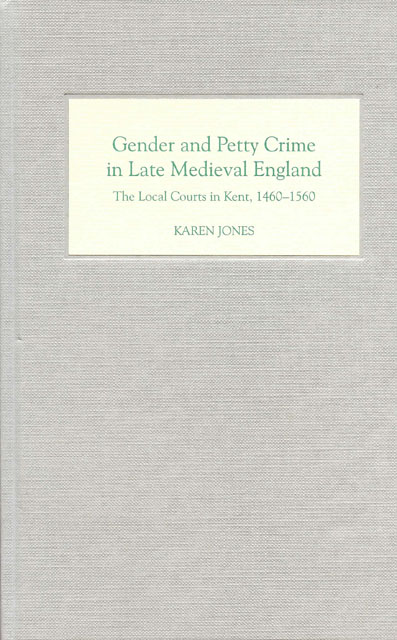7 - Conclusion
Published online by Cambridge University Press: 23 March 2023
Summary
Now that the prosecutions of men and women in the local courts have been analysed according to types of offences, an overview can be taken of the patterns that emerge and what can be deduced from them. This concluding chapter will first consider the changes that took place in the offences presented in local courts over the period c.1460 to 1560 and briefly discuss how the regulation of misconduct changed up to about 1600 and to what extent these changes may have altered gender relations in the later sixteenth century. It will then consider the similarities and differences in the prosecutions of comparable forms of misbehaviour in the ecclesiastical and secular courts. Thirdly, since gender cannot be examined without also considering class, age and marital status, the impact of these will be discussed. Then the central issue will be addressed, that is, how far men and women were treated differently by the courts, what the differences suggest about gender relations in the period, and how social control was exercised, particularly over women. It will be concluded that, while most prosecutions were of men, there was nonetheless a heavily gendered construction of misconduct, with women disproportionately accused of sexual and verbal offences and men of physical violence. Contemporary perceptions of femininity, and of what constituted honourable female conduct are clearly reflected in the prosecutions. For men, what emerges from the court records is the extent to which they were conscious of their social, economic and sexual status and the need they felt to continually lay claim to equality with, or superiority to, other men.
Change over time
Part of the aim of this research was to investigate whether the treatment of men and women by the local courts changed over time, and to see if it was possible to discern the beginnings of a ‘crisis in gender relations’ in the later sixteenth century. The surviving records are incomplete, habits of record-keeping varied over the period, and the possibility remains that when prosecutions for certain minor offences declined in the local courts, they were being dealt with either in a different court, or informally by the local community, or summarily by justices of the peace. The conclusions that can be drawn about change over time are therefore limited, but some things stand out.
- Type
- Chapter
- Information
- Gender and Petty Crime in Late Medieval EnglandThe Local Courts in Kent, 1460-1560, pp. 196 - 208Publisher: Boydell & BrewerPrint publication year: 2006



